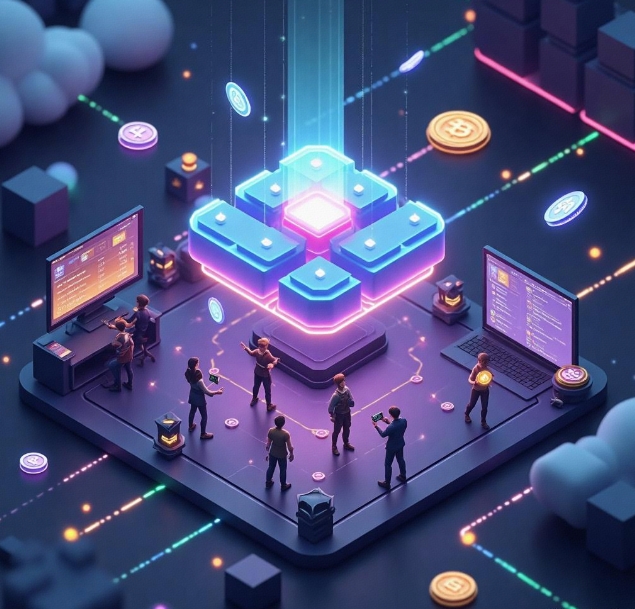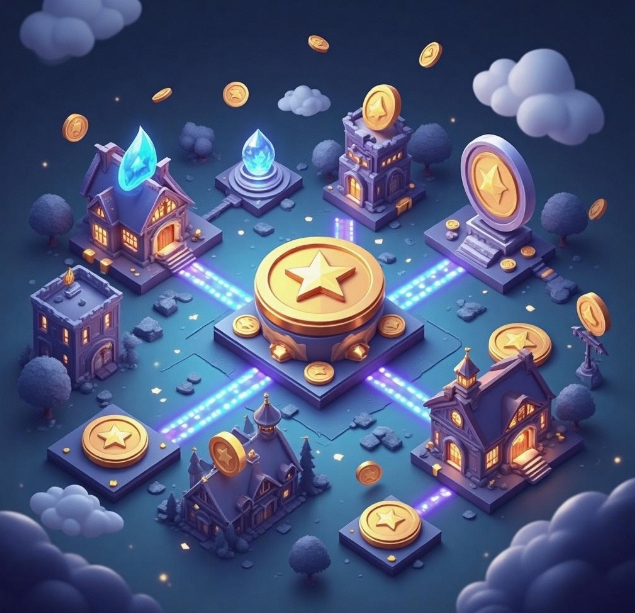With the rapid development of blockchain technology, the concepts of Web3 and decentralization are gradually permeating various industries, especially in the gaming sector. Web3 games, as a product of the integration of decentralized technology and the gaming industry, are sparking a revolution. The Play-to-Earn (P2E) model, as a crucial component of Web3 games, not only redefines the relationship between players and games but also provides new profit opportunities for both developers and players.
This article will introduce how to develop a Web3 game from scratch, with a particular focus on building a successful Play-to-Earn model, exploring its fundamental concepts, key technologies, and implementation steps.
1. What are Web3 Games and the Play-to-Earn Model?
1.1 Definition of Web3 Games
Web3 refers to the new generation of the internet based on blockchain technology, emphasizing decentralization, user autonomy, and data ownership. Web3 games are those born under this framework, utilizing technologies such as blockchain, smart contracts, and NFTs (Non-Fungible Tokens) to grant players true ownership of in-game assets and enable interaction through decentralized means.
In Web3 games, players are not just consumers of game content but also participants in the game's economic system. Unlike traditional games, Web3 games allow players to have true ownership of in-game items and assets, which can be traded on the market for profit.
1.2 Introduction to the Play-to-Earn Model
Play-to-Earn (P2E) is a revolutionary model in Web3 games, literally meaning "play to earn." In this model, players can earn virtual assets by participating in various in-game activities. These assets typically exist in the form of cryptocurrencies or NFTs. Players can sell, exchange, or even use these assets in other games, thereby generating profit.
The core of the P2E model lies in players being able to gain real value from gaming, not just entertainment. This model drives player engagement through incentive mechanisms, attracting more users to the blockchain ecosystem and creating a virtuous cycle.
2. The Basic Process of Web3 Game Development
Developing a Web3 game, especially one with a Play-to-Earn model, involves knowledge and technology from multiple areas. Below is the basic process for developing a Web3 game.
2.1 Game Design and Economic Model Planning
Before developing a Web3 game, it is essential to define the game's design philosophy and economic model. Unlike traditional games, the economic systems of Web3 games are often more complex, involving the issuance and trading of virtual assets, as well as interactions between players. Therefore, designing a reasonable game economic model is crucial.
Core Gameplay Design: The core gameplay determines player motivation. The success of the P2E model often depends on whether the game itself is engaging and attractive. Therefore, it is essential to design an appealing core gameplay, such as role-playing, combat, quests, or resource gathering.
Incentive Mechanism Design: In the P2E model, players earn rewards by completing tasks, engaging in combat, or other in-game activities. Rewards can be in-game virtual currency or NFT assets. Developers need to design a reasonable reward distribution mechanism to ensure the balance of the economic system and avoid inflation or excessive resource concentration.
NFT Asset Design: As one of the core elements of Web3 games, NFTs allow players to own unique in-game items or characters. When designing NFTs, considerations should include their scarcity, tradability, and players' collection and usage needs. Common NFTs include characters, equipment, land, etc.
2.2 Blockchain Platform Selection and Smart Contract Development
The core technological foundation of Web3 games is blockchain, so choosing a suitable blockchain platform is crucial for the game's success. Common blockchain platforms include Ethereum, Binance Smart Chain (BSC), Polygon, Solana, etc. Each platform has its unique advantages and characteristics, and developers need to select the most appropriate one based on the game's requirements.
Blockchain Platform Selection: Ethereum was the first blockchain to support NFTs, but it has higher transaction fees and slower speeds. For small or medium-sized Web3 games, BSC and Polygon may be more suitable as they offer lower transaction fees and faster transaction speeds.
Smart Contract Development: Smart contracts are self-executing protocols on the blockchain. Most economic activities in Web3 games, such as NFT issuance, trading, and P2E reward distribution, are implemented through smart contracts. Developers need to have some proficiency in Solidity (Ethereum's smart contract programming language) or other blockchain smart contract languages.
2.3 Wallet Integration and User Identity Management
Web3 games typically require players to have a digital wallet (e.g., MetaMask, Coinbase Wallet, etc.) to store their crypto assets and NFTs. The game needs to integrate these wallets to enable user identity management and asset access.
Wallet Integration: Players can enter the game by connecting their digital wallets. The game interacts with the wallet through smart contracts to enable functions like asset transfers and reward distribution.
Identity Management: Identity management in Web3 games includes not only the player's game account information but also their digital assets and NFTs. For example, a player's game characters, equipment, etc., may be stored on the blockchain, ensuring true ownership by the player.
2.4 Game Frontend and User Experience
The frontend development of Web3 games is similar to traditional games but requires integration with the blockchain. While enjoying the gaming experience, players also need to conveniently manage their blockchain assets. Therefore, user experience design is crucial.
User Interface Design: The interface of Web3 games needs to be clear and concise, allowing players to easily view and manage their virtual assets, while also providing operational interfaces for functions like trading and rewards.
Transaction Process Simplification: Due to the potential complexity of blockchain transactions, game developers need to simplify the transaction process as much as possible, enabling players to easily complete operations like cryptocurrency transfers and NFT trading.
2.5 Testing and Optimization
After development, the game needs to undergo multiple rounds of testing to ensure the security of smart contracts, the balance of the economic system, the smoothness of the user experience, and other aspects are problem-free. Especially in the blockchain environment, once a contract is deployed, it cannot be modified, so thorough testing in a testnet environment is necessary.
Smart Contract Auditing: To avoid contract vulnerabilities or attacks, developers usually need to hire professional third-party companies to audit the smart contracts.
Game Balance Adjustments: In the P2E model, the balance of the economic model is critical. Developers need to adjust the reward distribution mechanism based on testing feedback to avoid issues like "explosive growth" or "resource depletion."
3. Key Technologies for Implementing the Play-to-Earn Model
3.1 NFTs and Token Economy
NFTs (Non-Fungible Tokens) are an important component of Web3 games, representing unique items or characters in the game. Through NFTs, players can own and trade in-game items, providing the technical foundation for the implementation of the P2E model.
The token economy drives economic activities in the game by issuing cryptocurrencies (typically in-game tokens). Players can earn token rewards by completing tasks, engaging in combat, etc. These tokens can be exchanged for fiat currency on exchanges or used to purchase other items within the game.
3.2 Decentralized Autonomous Organization (DAO)
DAO (Decentralized Autonomous Organization) is an organizational form in the Web3 ecosystem that allows community members to govern and make decisions collectively. In P2E Web3 games, DAOs can be used for game governance, such as deciding on reward distribution mechanisms, modifying game rules, etc. Through DAOs, players can participate in game management, enhancing their sense of involvement and belonging.
3.3 Cross-Chain and Interoperability
With the development of blockchain technology, cross-chain technology is becoming increasingly important. In Web3 games, players may use assets from different blockchains, and cross-chain technology enables interoperability between these assets. Through cross-chain technology, players can transfer assets between different blockchains, expanding the game's ecosystem.
4. Conclusion
Web3 games and the Play-to-Earn model are reshaping the landscape of the entire gaming industry, bringing new opportunities and challenges to both players and developers. By reasonably designing the game's economic model, selecting the appropriate blockchain platform, developing smart contracts, and optimizing the user experience, developers can create a successful Web3 game. In the future, with continuous technological advancements, Web3 games will continue to provide players with richer and more valuable gaming experiences, and the Play-to-Earn model will gradually become mainstream.

 Blockchain
Blockchain















